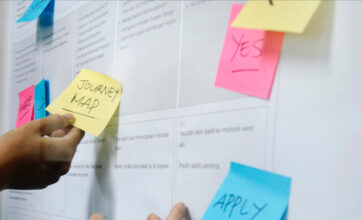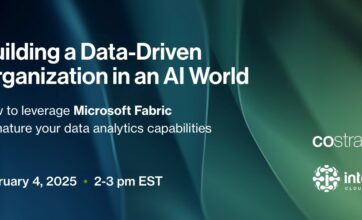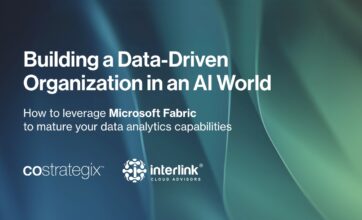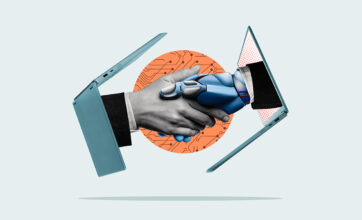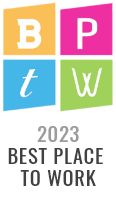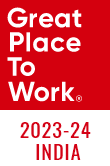6 Frameworks To Ensure A Product Market Fit
- 5 minutes read
The market is littered with well-intended failures from companies that neglected to listen to the market. In fact, 35% of startups fail because there is no market need for their products, according to CB Insights: There’s no product market fit.

Commercial wisdom says to give customers what they want. But when all you do is ask them what they want, product users can be (unintentional) liars.
- As Henry Ford once said: If I asked customers what they wanted, they would have told me “A faster horse!”
- Or, in Steve Jobs’ words: People don’t know what they want until you show it to them. That’s why I never rely on market research. Our task is to read things that are not yet on the page.
As a digital and data consulting company, CoStrategix helps clients find the right product-market fit: Intently listening to users to understand the problem or need, while thinking broadly to define the solution. Users often can’t articulate what they want effectively. They can, however, tell you what they value, or what they need in order to complete the jobs being asked of them.
Our job is to listen to those wants, and dissect them to understand the circumstances, existing ecosystem, and competing jobs to be done. Then we make sure to deliver solutions that solve the RIGHT problems and answer deep-rooted pain points. The sweet spot is the right product-market fit.
Here are six frameworks that we use to understand user needs when users can’t articulate the need themselves… which to be honest, is often.
1. Focus on the Problem, Not the Solution
When you have expertise in a certain area, it is easy to fall into the solution space. Our lives revolve around quickly assessing a problem and solving it. We are trained for it.
But in new product development, the quicker we move to solutions, the more closed off we become from the solution. If you already know the answer, why spend more time thinking about a better mousetrap?
As you think about the job to be done, try to look at all of the angles of the problems and gaps that our users are experiencing, and what they value. Prioritize those first to gauge the problem sets and drill down to better understand them. Only then start to move forward, once you’re confident that you understand not just the primary problem, but all of the other ancillary jobs they are looking for the solution to provide.
You’ve probably heard the adage: No one needs a drill, everyone just needs a hole. Instead of jumping to a solution for a better drill – faster drill speed, bigger bits, added flashlights or levels – start out by identifying the user’s primary need and constraints. If you’re speaking to users looking for a drill, ask about the problem and think backward: The users are trying to hang a mirror. In an apartment that they rent. And the mirror weighs less than 40 pounds. So, perhaps in this situation, the ideal solution would be finding double-sided tape that can hold up to 40 pounds instead of a better drill.
2. Inside-Out vs. Outside-In Viewpoints
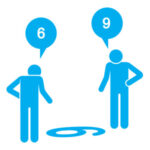 The Outside-In vs. Inside-Out concept has many applications in product development. An Inside-Out Viewpoint focuses on the organization’s internal capabilities, expertise, and resources. Developing products using this viewpoint shapes the product based on what the company believes to be valuable or necessary, and then looks for ways to create a desire for the product among customers. This approach tends to prioritize efficiency, cost-effectiveness, and leveraging existing assets. ~~ Think Apple, which creates innovative products based on its vision and values.
The Outside-In vs. Inside-Out concept has many applications in product development. An Inside-Out Viewpoint focuses on the organization’s internal capabilities, expertise, and resources. Developing products using this viewpoint shapes the product based on what the company believes to be valuable or necessary, and then looks for ways to create a desire for the product among customers. This approach tends to prioritize efficiency, cost-effectiveness, and leveraging existing assets. ~~ Think Apple, which creates innovative products based on its vision and values.
An Outside-In Viewpoint involves thoroughly understanding customer needs, preferences, and pain points, and then designing the product to address those factors. Developing products using this viewpoint creates a product around what customers are looking for, and then delivers it with a value proposition. This customer-centric approach emphasizes market research, user feedback, and iterative testing to ensure that the product meets or exceeds customer expectations. ~~ Think Amazon, which creates customer-centric products based on feedback and data.
Both viewpoints can be valuable. By blending internal capabilities with external market insights, organizations can strike a balance between innovation and operational efficiency, resulting in products that meet customer needs while leveraging internal resources effectively.
At CoStrategix, we look to extract and understand an organization’s culture, status quo, and business objectives. Then we apply our market, product, and technology development expertise to coalesce those perspectives and ensure the right product market fit. It’s hard sometimes when you’re “inside” the process to be able to take yourself out. That’s where user research interviews and outside perspectives can help you think objectively about why, how, and what value various elements of your product experience provide. The outside perspective helps you understand whether you need to remove, automate, or integrate elements to provide a more delightful experience.
3. The 5 Whys Framework
In his Ted Talk about the puzzle of motivation, Dan Pink emphasizes that traditional incentives based solely on rewards and punishments can hinder creativity and problem-solving abilities. Instead, he suggests that intrinsic motivation, autonomy, and the opportunity for mastery are more effective in driving creative thinking.
We find that the 5 Whys Framework can help clients break out of traditional patterns of thinking around motivation. This framework involves repeatedly asking “why” at least five times to delve deeper into an issue, unraveling its underlying causes. By systematically probing deeper with each “why,” teams can uncover the true source of a problem. Then they can address it directly, rather than merely treating the symptoms.
On one occasion, we were engaged by a client to build a new digital product. Upon further “why” questioning, we realized the client needed something completely different than what they were asking for. They requested a complex system that would precisely connect multiple calendars for internal planning purposes – down to the hour. Upon further questioning, we all realized that they actually only needed to know whether conflicts might arise on a given day. That would be a much simpler, less costly solution to build.
The 5 Whys framework encourages a thorough understanding of an issue, promotes critical thinking, and helps prevent misaligned motivation.
4. Problem-Space Thinking
In the Lean Product Playbook by Dan Olsen, the “Problem-Space” refers to the initial phase of product development where the focus is on identifying and understanding the problem that the product aims to solve. We use this framework to help clients align on the deeper problem instead of stopping at the surface level. The Problem-Space phase involves these key activities:
- Problem Exploration: Researching the market and the target customers to identify potential problems worth solving. It may include competitive analysis, studying industry trends, and seeking customer feedback.
- Customer Understanding: Gaining deep insights into the target customers, their behaviors, motivations, and pain points. It often involves conducting interviews, surveys, and observational studies to understand their needs and challenges.
- Problem Definition: Clearly defining and articulating the problem that the product intends to address. This involves distilling the research findings into a concise problem statement.
- Problem Prioritization: Prioritizing problems based on their impact, feasibility, and alignment with the company’s goals and resources. The goal is to identify the most critical and valuable problems to solve.
Thoroughly exploring the problem space helps ensure we are working on the right problems before advancing to the solution space. This approach minimizes the risk of building products that do not meet customer needs or solve meaningful problems, thus increasing the chances of success in product development.
5. Digital Sketch Artist
Some of our clients have engaged CoStrategix for process mapping work that, surely, they could have done themselves. After all, they know their processes better than an outsider, right? Or do they?
Sometimes, perspective can be blinding. People in different areas of the business may bring contrasting perspectives. An outside view can tease out differences of opinion that you might not have known existed.
In one such case, we interviewed various teams, then reflected on what they told us like a digital sketch artist. We asked, does this represent reality? You’d be surprised to know how often everyone in the room has a different opinion!
When it comes to product development, it’s critical that everyone on your team is in alignment with the goals and priorities of your product. What are the primary problems you’re looking to solve first, second, and third? Without this alignment, your product is doomed to solve multiple masters, and none of them very well.
6. Experimentation
Arguably, the most important part of product development is experimentation. You can’t sit in the problem space forever. You have to move on to a solution. We recommend developing a Minimum Viable Product (MVP) or Proof of Concept (POC) first. This will solve just enough of the problem to validate whether your digital product has legs. Also, this allows you to deliver value quickly. From there, you can do mini-experiments so that your course corrections are minor and not monumental. This also ensures the right product market fit.
As a strategic digital and data consulting firm, CoStrategix engages daily with key business stakeholders across industries. We have helped hundreds of organizations build digital products and platforms that have transformed their operations. We can help you at any stage in your journey – whether you see an opportunity but don’t know where to start, or you have a solution already mapped out and need help with execution.
AI Strategy & Solutions – Elevate your business with advanced analytics
Data & Insights – Drive insights that lead to competitive advantage
Product Development – Build platforms that power unique digital capabilities
Platform & Technology Modernization – Modernize for stellar experiences, efficiency, and AI
Related Blog Posts
Building a Data-Driven Organization for an AI World 2
February 5, 2025
Building a Data-Driven Organization for an AI World
January 28, 2025
AI POC Best Practices
January 13, 2025
